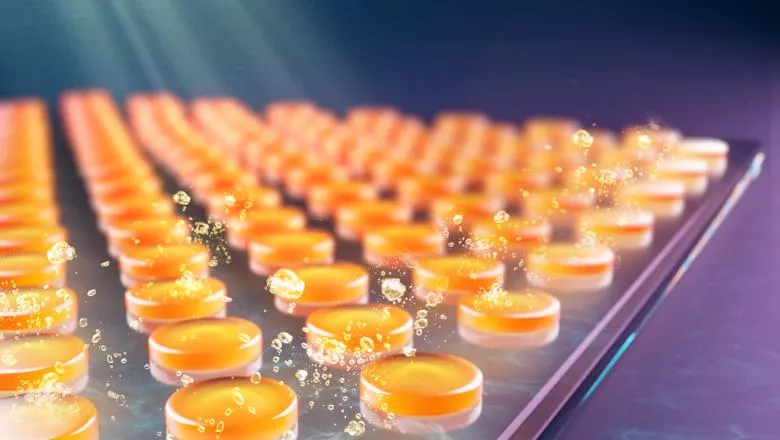
Professor David Richards
Head of Department
- Professor of Physics
Research interests
- Physics
Biography
David Richards is Head of the Department of Physics and Professor of Physics at King's College London. He also previously served as Head of Department from 2007 to 2015 and was Vice-Dean (Research) in the Faculty of Natural, Mathematical & Engineering Sciences from 2014 to 2022. He was King's College London's lead for the EPSRC Impact Acceleration Award 2016-2021. He is a Fellow of the Institute of Physics and from 2013-15 was Chair of the UK Standing Conference of Physics Professors (now known as the Heads of Physics Forum).
David holds MA and PhD degrees in physics from the University of Cambridge. Before moving to King’s in 2000, he worked as a research fellow in the Fraunhofer Institute for Applied Solid State Physics, Freiburg and in the Cavendish Laboratory, Cambridge, where he held fellowships from St. John’s College Cambridge and Lloyds’s of London Tercentenary Foundation, and then a Royal Society University Research Fellowship.
David's past research has been concerned with optical spectroscopy and imaging, particularly fluorescence and Raman scattering, with a focus on nano- and bio-photonics, with current research interests in the area of plasmonics, in particular the development of plasmonic nanomaterials with a focus on their potential application in photocatalysis.
His past research has included the study of the electronic and optical properties of semiconductor nanostructures, in particular providing insight through Raman spectroscopy into the properties of plasmons and spin excitations in low-dimensional electron gases. Research in nanophotonics has also included the development, theory and application of scanning near-field optical microscopy, including the development of 'tip-enhanced' Raman and fluorescence microscopy, leading in turn to a focus on surface-enhanced Raman scattering (SERS) and the manipulation of fluorescence using plasmonic nanostructures. This has previously included application in fluorescence biological cell imaging for novel cellular screening assays, while other interests in biophotonics have included the development of ultra-broadband coherent anti-Stokes Raman scattering (CARS) imaging.
In technology transfer, David was also a co-founder of a start-up company (subsequently sold in a trade sale), which developed a microfluidic fluorescence assay system for drug discovery.
Research
When light interacts with a plasmonic nanostructure, it can excite collective oscillations called surface plasmons, which enable efficient use of electromagnetic radiation over a broad wavelength range from the ultraviolet to the infrared, with large electromagnetic field enhancements in the vicinity of the nanostructure. Some of the light energy stored in these surface plasmons can be re-emitted as light but some can also decay into an electron-hole pair – an energetic, "hot" carrier. If these hot carriers can be extracted from the plasmonic nanostructure efficiently, they can be used to drive novel photochemical reactions. Photocatalysis, lies at the heart of new technologies ranging from the use of sunlight for water decontamination and for the generation of fuels and energy carriers in a net zero carbon economy, to bond selective photochemistry in drug manufacturing – plasmon-mediated photocatalysis offers the promise of an exciting new approach to control and manipulate chemical processes efficiently with light. David is a co-investigator of the EPSRC Programme ' New perspectives in photocatalysis and near-surface chemistry: catalysis meets plasmonics' (CPLAS) led by Professor Anatoly Zayats (https://www.cplas.org)
Applications are welcome from candidates interested in PhD research concerned with the application of optical spectroscopy, in particular Raman scattering, to gain new insight into the mechanisms driving plasmon-mediated photocatalysis. Please see the Department's postgraduate web pages for information on funding and how to apply for a postgraduate research degree.
Research

Photonics & Nanotechnology
The research in the group involves the development and applications of advanced photonic technologies and of novel nanomaterials to address modern challenges in photonic and quantum technologies, new nanostructured materials, sensing, imaging and clean energy.
News
King's researcher leads £10 million EPSRC grant investigating light-driven energy-conversion
Could the world’s most abundant energy source – light – solve one of the most pressing demands for a sustainable society, reducing the energy required in key...

Nanostrand newsletter available for download
Nanostrand is the newsletter for the Photonics & Nanotechnology Group and the Biological Physics and Soft Matter Group in the Department of Physics.

Research

Photonics & Nanotechnology
The research in the group involves the development and applications of advanced photonic technologies and of novel nanomaterials to address modern challenges in photonic and quantum technologies, new nanostructured materials, sensing, imaging and clean energy.
News
King's researcher leads £10 million EPSRC grant investigating light-driven energy-conversion
Could the world’s most abundant energy source – light – solve one of the most pressing demands for a sustainable society, reducing the energy required in key...

Nanostrand newsletter available for download
Nanostrand is the newsletter for the Photonics & Nanotechnology Group and the Biological Physics and Soft Matter Group in the Department of Physics.

